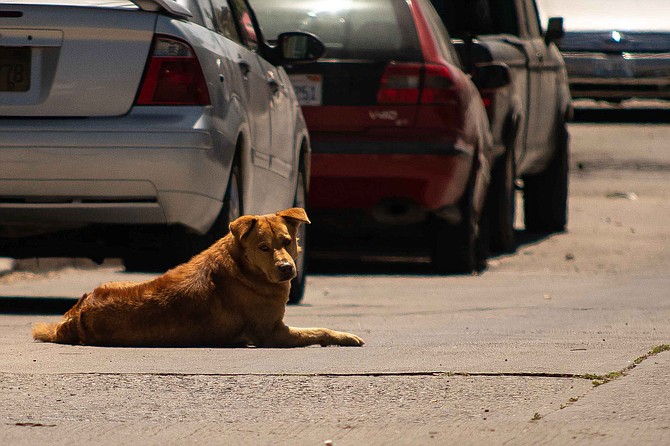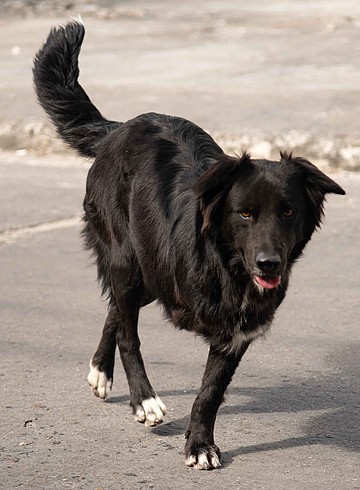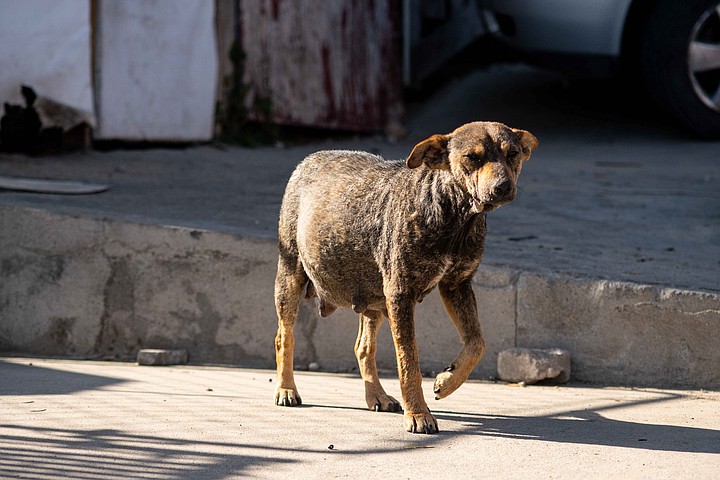 Facebook
Facebook
 X
X
 Instagram
Instagram
 TikTok
TikTok
 Youtube
Youtube

According to Ivan Marquez from ProvidAnimal Tijuana, there are more than 300,000 stray dogs in Tijuana. “Right now it is difficult to know, but four years ago that was the estimated population. Due to cancellation of sterilization campaigns by the government and private organizations during the pandemic, the number could have increased,” he explained.
The issue is throughout the city, but the east part of Tijuana is where the problem is highly visible. This area has other problems like crime, poverty, drugs or lack of public services that have pushed stray dogs down on the list of priorities.
“It’s a zone with more limitations, talking socio-economically,” he said. On top of that, there’s a market for purebred dogs and therefore there are people exploiting and reproducing dogs to sell, even though statewide it’s illegal to breed dogs.”
But despite of this, some changes have come. Ivan Marquez said that seven years ago government dogs were electrocuted or in gas chambers, and they had just a 72 hours period to be adopted.
“When we had our dog shelter, we used to receive 10 reports daily of pet abuse or attacks from dogs with irresponsible owners. But now there are people that make rescues independently.”

Laura Arellano is one of those independent activists. She and her sister use their own money to support their labor. “Stray dogs in Tijuana go through the most horrible situations you can imagine. Some are sexually abused or mutilated. They can live in the streets for years until they die.”
Arrellano remembers the case of the dog she baptized as Flora but her new owners call her Tia in honor of Tijuana.
“The analysis showed that someone shot her, and the bullet was stuck in her chest. It caused her a serious cough problem. I can’t explain to myself how a person can shoot a dog. How can you do that?” She’d seen even kids maltreating dogs. As she sees it, that’s an education problem from the households. “It’s obviously a behavior learned within their families. That violence can scale up. Later on those kids can be violent with humans,” she stated.

Arrellano has support from a Canadian group that helps find new families for her rescued dogs. Her sister, who focuses on sterilization campaigns, gets support from Los Angeles.
Arrellano says that around 90 percent of the money they use for these campaigns comes from California or Canada. And for adoptions they cross the animals by land to the U.S. Then in Temecula they hand them over to another person that will deliver dogs to their next home.
Tijuana’s Animal Control Center has introduced an injection that causes heart attacks in the unwanted dogs instead of the old methods.


According to Ivan Marquez from ProvidAnimal Tijuana, there are more than 300,000 stray dogs in Tijuana. “Right now it is difficult to know, but four years ago that was the estimated population. Due to cancellation of sterilization campaigns by the government and private organizations during the pandemic, the number could have increased,” he explained.
The issue is throughout the city, but the east part of Tijuana is where the problem is highly visible. This area has other problems like crime, poverty, drugs or lack of public services that have pushed stray dogs down on the list of priorities.
“It’s a zone with more limitations, talking socio-economically,” he said. On top of that, there’s a market for purebred dogs and therefore there are people exploiting and reproducing dogs to sell, even though statewide it’s illegal to breed dogs.”
But despite of this, some changes have come. Ivan Marquez said that seven years ago government dogs were electrocuted or in gas chambers, and they had just a 72 hours period to be adopted.
“When we had our dog shelter, we used to receive 10 reports daily of pet abuse or attacks from dogs with irresponsible owners. But now there are people that make rescues independently.”

Laura Arellano is one of those independent activists. She and her sister use their own money to support their labor. “Stray dogs in Tijuana go through the most horrible situations you can imagine. Some are sexually abused or mutilated. They can live in the streets for years until they die.”
Arrellano remembers the case of the dog she baptized as Flora but her new owners call her Tia in honor of Tijuana.
“The analysis showed that someone shot her, and the bullet was stuck in her chest. It caused her a serious cough problem. I can’t explain to myself how a person can shoot a dog. How can you do that?” She’d seen even kids maltreating dogs. As she sees it, that’s an education problem from the households. “It’s obviously a behavior learned within their families. That violence can scale up. Later on those kids can be violent with humans,” she stated.

Arrellano has support from a Canadian group that helps find new families for her rescued dogs. Her sister, who focuses on sterilization campaigns, gets support from Los Angeles.
Arrellano says that around 90 percent of the money they use for these campaigns comes from California or Canada. And for adoptions they cross the animals by land to the U.S. Then in Temecula they hand them over to another person that will deliver dogs to their next home.
Tijuana’s Animal Control Center has introduced an injection that causes heart attacks in the unwanted dogs instead of the old methods.
Comments